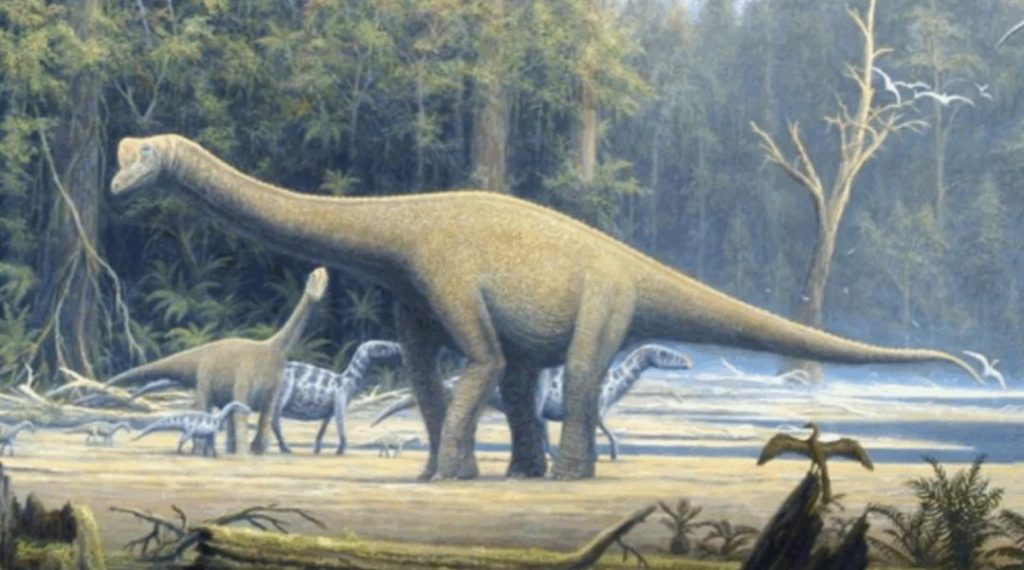
Scientists Uncover Dinosaur Species that Survived Mass Extinction
In a groundbreaking discovery, researchers have identified a new carnivorous dinosaur species, Maleriraptor kuttyi, in the Pranhita-Godavari Valley of India. This remarkable find not only sheds light on the diversity of dinosaurs that roamed the Earth 220 million years ago but also challenges our understanding of their resilience and adaptability in the face of a mass extinction event.
The fossils of Maleriraptor kuttyi were unearthed in the Pranhita-Godavari Valley, a region known for its rich fossil deposits and diverse geological history. The valley is situated in the state of Telangana, India, and has yielded several important fossil finds in recent years. However, this discovery stands out for its significance, as it represents the first definitive Herrerasaur find outside of South America.
Herrerasaurs were a group of early dinosaurs that lived during the Triassic period, roughly 230-200 million years ago. These fascinating creatures were characterized by their small size, agile bodies, and carnivorous diet. Until now, the majority of Herrerasaur fossils have been found in South America, leading researchers to believe that this group was confined to that continent.
The discovery of Maleriraptor kuttyi not only expands our knowledge of Herrerasaurs but also provides evidence that this group was able to survive the mass extinction event that occurred at the end of the Triassic period, known as the Triassic-Jurassic extinction. This event, which occurred around 200 million years ago, was one of the most significant extinction events in Earth’s history, wiping out over 80% of all species on the planet.
The fact that Maleriraptor kuttyi survived this catastrophic event is a testament to the resilience and adaptability of dinosaurs. It suggests that these creatures were able to evolve and thrive in a rapidly changing environment, and that their ability to adapt to new circumstances played a crucial role in their survival.
The fossil remains of Maleriraptor kuttyi include several well-preserved specimens, including a nearly complete skeleton. The team of researchers, led by Dr. Suresh Patel, a paleontologist from the University of Telangana, used a combination of traditional fossil preparation techniques and advanced computer simulations to analyze the fossils.
“We were amazed by the quality and completeness of the fossils,” said Dr. Patel in an interview. “The fact that we were able to recover so much information from these ancient remains has allowed us to reconstruct the biology and behavior of this incredible dinosaur.”
One of the most striking features of Maleriraptor kuttyi is its unique combination of characteristics. The dinosaur had a long, slender body, measuring around 3 meters (10 feet) in length, with powerful legs and sharp claws. Its skull was narrow and pointed, with a distinctive crest running along the top. This crest is thought to have been used for display purposes, such as attracting mates or intimidating rivals.
The discovery of Maleriraptor kuttyi is not only significant for our understanding of dinosaur evolution and diversity but also has important implications for our understanding of ancient global ecosystems. The fact that this dinosaur species was able to survive in India, a region that was previously thought to be devoid of Herrerasaurs, suggests that these creatures were able to migrate and colonize new areas.
“This find is a game-changer,” said Dr. Patel. “It shows us that dinosaurs were capable of traveling long distances and adapting to new environments, which is a crucial aspect of their success.”
The discovery of Maleriraptor kuttyi is a testament to the importance of fossil hunting and the dedication of researchers who spend years searching for and analyzing ancient remains. It also highlights the significance of India’s fossil record, which is still largely untapped and holds many secrets about the evolution of life on Earth.
As we continue to uncover the secrets of the ancient world, we are reminded of the awe-inspiring diversity and resilience of dinosaurs. Maleriraptor kuttyi is a remarkable example of their ability to adapt and thrive in a rapidly changing world, and its discovery will undoubtedly shape our understanding of dinosaur biology and ecology for years to come.






